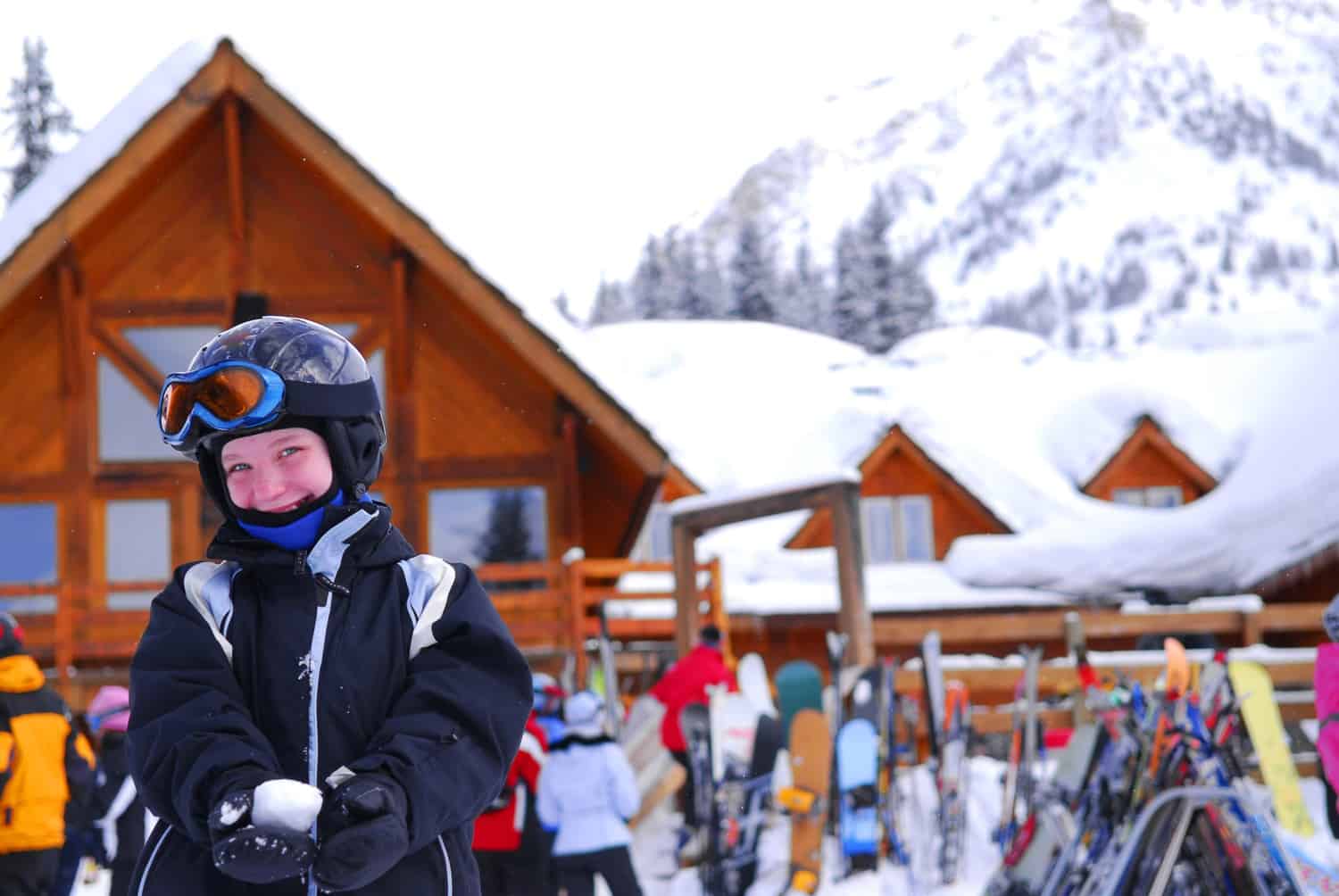Winter is here and in many places across the United States – it’s cold outside with wind, snow, and ice. As temperatures drop, it’s still important for children to get outside and play. It’s a bit more complex as parents and caregivers need to ensure the children are properly protected from the cold.
To adequately prepare, it’s vital to know the actual temperature and the wind chill factor, to know how many layers and what type of clothing will protect children in cold weather.
Infants
Babies are very susceptible to cold temperatures as their bodies lose heat quickly and they cannot tell you when they are cold. Newborns and infants shouldn’t be outside in extremely low temperatures for any length of time. Even a short trip from the house to the store requires wrapping the baby in layers and protecting any exposed skin from frostbite. Blankets are important for the car as heavy jackets and coats must be removed when the child is placed in the car seat. As a general guideline, infants need one layer more than adults.
Toddlers and Preschool
As they grow into toddlers, children become more excited about their environment and should experience playing outside in the cold. Make sure the toddler is wearing layers that include warm socks, warm shoes or boots, thick pants or snow pants, a heavy coat along with a warm hat and gloves or mittens. If there is snow, make sure the hands and feet are kept dry. Playtime outside for toddlers in cold weather should be limited – preferably less than 30 minutes. Of course, if temperatures are extreme (below zero actual or wind chill), keep the children indoors to play.
Elementary School Age
Older children should also wear layers and make sure they are protected when playing in the cold. Although more aware of the cold and its impact on their bodies, elementary school-age children may not go inside when they are cold, especially if they are playing in the snow. It’s important to allow outside playtime but check to ensure their clothing remains dry and check their hands and feet often.
All children spending time outdoors in cold weather should be watched closely to make sure they don’t get too cold. Hypothermia, a dangerous lowering of the body’s temperature, and frostbite, damage to the body due to cold, can happen quickly. The cold can injure children, especially when hands and feet get wet from melting snow. If you notice a child shivering or if they start to mumble or slur their speech, get them to a warm place. Remove any wet or cold clothing and wrap them in warm blankets. Offer them warm drinks and if they don’t improve, seek immediate medical attention.
Frostbite occurs when the skin is exposed to cold temperatures for a length of time and most often occurs on the extremities (fingers, toes, ears, nose, cheeks, etc.). If a child says their skin is tingling or aching, they should get inside immediately as their skin may become numb and turn whitish. If the skin appears to be frozen, seek immediate medical attention for proper rewarming.
Surprisingly, overheating can also be a consideration. When dressing a baby or toddler for cold outside temperatures, we sometimes overdo it. Older kids may spend time running around or climbing hills for sledding, getting warm from exertion. If you notice a baby or child sweating while outside, take them in and remove some layers. Make sure to remove any layers that may be wet from sweat – as this can freeze if the child goes out again.
As adults, we’re pretty good at listening to our bodies and understanding when we are getting too cold. However, babies and toddlers, and even school-age children need our supervision and help in protecting their bodies during the cold winter months.
Tips to Protect Children in Cold Weather
- Use layers for warmth. Layers can include a shirt, sweatshirt, and a coat. For pants, it may mean a tight-fitting pair of pants with waterproof snow pants on top. By layering, children can peel off one layer or add layers to manage the outside temperature and amount of exertion. Make sure several pairs of socks are used to protect the feet as well as hats, scarves, and mittens to protect the head, neck, and hands.
- Supervise play areas. School may be out, and roads may be closed but it’s important to supervise children and their play area. Sledding in the street may seem like a good idea to a child but it’s extremely hazardous to be near cars on slick roads with limited visibility. Find safe play zones for children including yards or neighborhood parks.
- Check their exposure. Children may not understand the signs or able to tell an adult they are too cold. Check each child frequently and assess if they are wet or their hands or feet are too cold. Ask them if they feel any tingling or numbness in their fingers or toes.
- Decide on a time limit. Children that are having fun in the snow or cold may not want to come inside so having a time limit can set their expectations. It will be easier to get the children inside when they are prepared and if possible, share that the children can go outside again after they warm-up. While warming up, encourage them to drink lots of water or serve warm beverages and soup.
Outside exercise and activity are important for children to learn and develop, even during the winter. Toddlers can get restless in the house and young children love to make snowballs and go sledding. These playtime activities as well as going to the store or park in the cold are appropriate to do with children of all ages. When going out in the cold, remember to use proper clothing and protection to keep children warm and safe.
Nannies can learn advanced childcare with online nanny classes at the the Nanny Institute.


Recent Comments